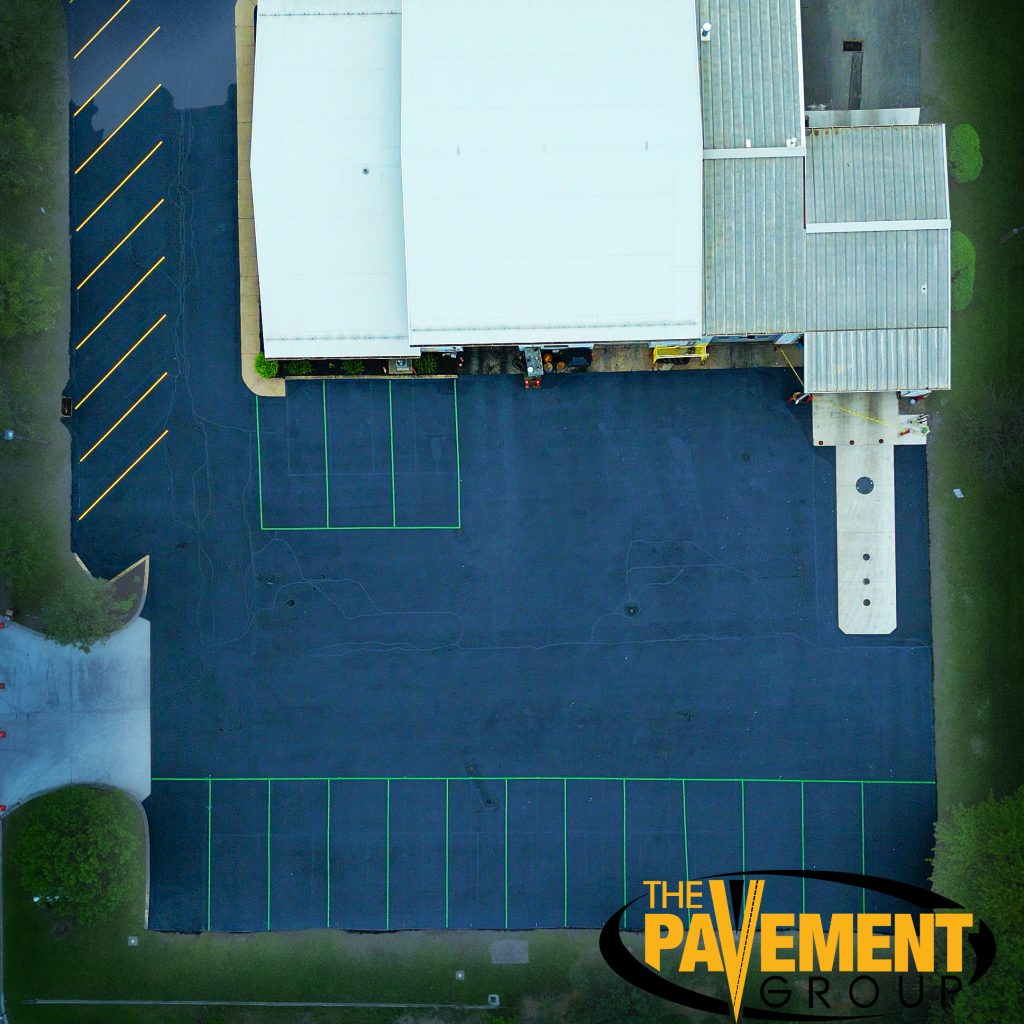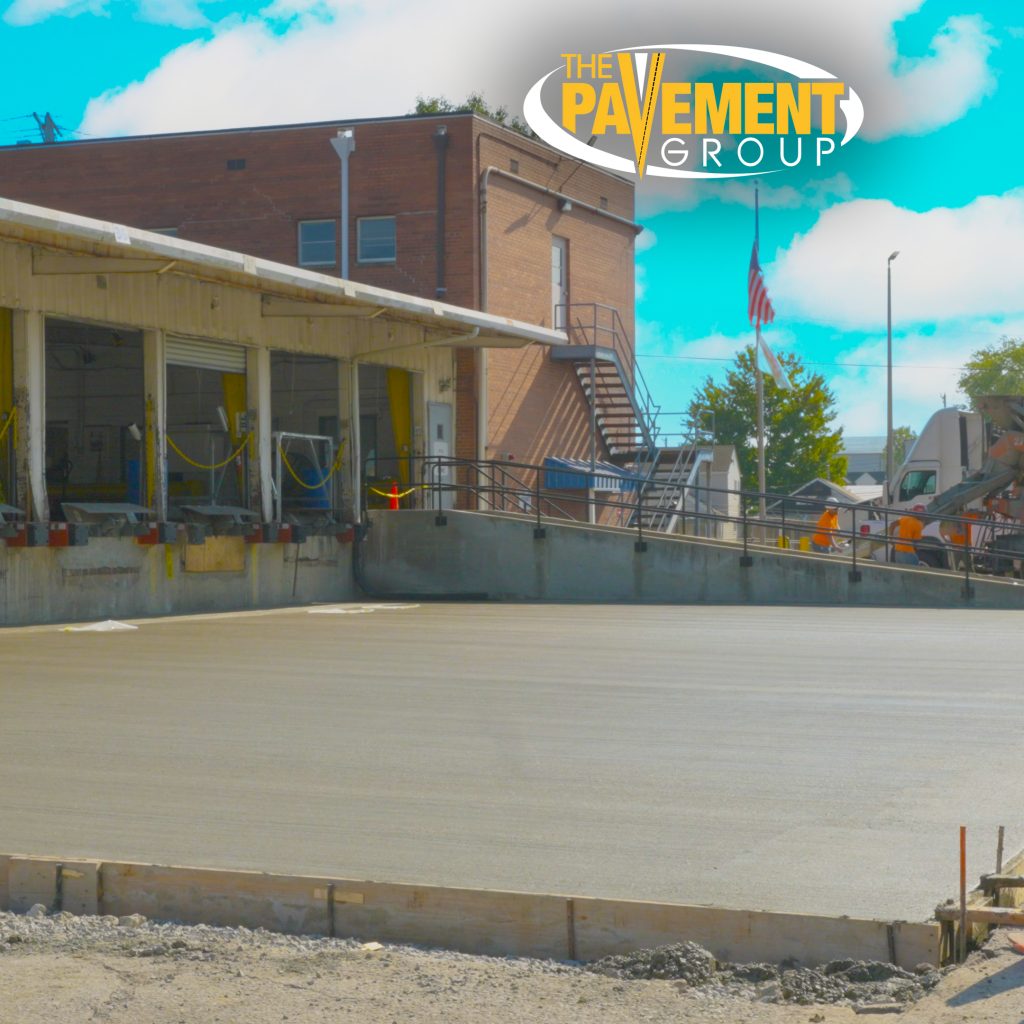Winter in retail spaces brings more than chilly air and holiday shoppers. It brings tough challenges for your pavement. From freezing temperatures to heavy snowfall, winter weather can cause significant damage if not addressed early. That’s where The Pavement Group steps in. We help businesses across the country prepare their retail pavement for whatever the cold season brings.
Preparing now can prevent costly repairs later and keep your retail property open and operational during peak shopping months.
Understanding the Impact of Winter on Pavement
Cold weather can wreak havoc on asphalt and concrete surfaces. When temperatures drop below freezing, moisture seeps into small cracks and expands as it turns to ice. This process, known as the freeze-thaw cycle, can cause pavement to crack, shift, and deteriorate quickly.
Preventing these issues starts with proactive maintenance before the first frost. By addressing small problems early, retail property owners can extend the lifespan of their pavement and maintain a positive first impression for visitors.
1. Inspect and Assess Your Pavement
The first step to preparing retail pavement for winter weather conditions is a thorough inspection. Walk your property and look for visible cracks, potholes, or drainage issues.
Even small imperfections can become major concerns once ice and snow arrive. A professional pavement assessment from The Pavement Group can identify weak spots you might miss. Our experts use advanced diagnostic tools to evaluate surface stability, drainage flow, and sealant condition.
2. Sealcoat Before Temperatures Drop
Sealcoating acts as a protective barrier against moisture, salt, and chemicals used in de-icing. Ideally, sealcoating should be completed before the first freeze to allow proper curing.
This process helps prevent cracks and potholes by minimizing water penetration. For retail centers, sealcoating not only protects the surface but also enhances appearance, giving your property a fresh, clean look.
At The Pavement Group, we recommend scheduling sealcoating during late summer or early fall for optimal results. A little preparation now ensures durability when winter hits hardest.
3. Repair Cracks and Potholes Early
Cracks may seem minor, but during winter, they can quickly expand and cause larger structural problems. Filling and sealing them before cold weather arrives is crucial.
Potholes, too, are a major concern for retail lots. They can damage vehicles, trip pedestrians, and create a poor customer experience.
Professional hot-mix asphalt patching or infrared repairs provide strong, long-lasting solutions that stand up to winter’s harsh conditions.
4. Ensure Proper Drainage
Standing water is a major enemy of pavement in winter. When water freezes, it expands and weakens the asphalt structure from within.
Inspect drains and gutters to ensure they are clear of leaves, debris, and blockages. Retail properties often experience drainage issues around curbs, loading zones, and high-traffic areas.
Proper slope and grading direct water away from the surface, preventing pooling that can lead to cracks and heaving. Investing in drainage maintenance now saves costly repairs come springtime.
5. Choose the Right De-Icing Methods
While salt is the most common de-icer, it can damage asphalt and concrete surfaces over time. Consider using calcium magnesium acetate or sand as safer alternatives.
Train maintenance crews on proper application techniques to prevent over-salting. Too much salt not only harms the pavement but also increases environmental impact.
6. Mark Pavement and Curbs for Snow Removal
When snow covers your retail parking lot, it’s easy for plows to scrape or damage unmarked surfaces. Use reflective stakes or paint to identify curbs, islands, and fire hydrants.
Clearly marked areas guide snow removal crews and help prevent unnecessary wear on the pavement. Proper markings also keep pedestrians and vehicles safer during icy conditions.
Snow removal planning should start before the first snowfall to ensure a smooth winter operations plan.
7. Maintain Regular Cleaning and Monitoring
Even during the winter, ongoing maintenance is important. Regularly sweeping away sand, debris, and residual salt helps preserve surface integrity.
Schedule monthly inspections to check for new cracks, drainage problems, or plow-related damage. Staying proactive keeps minor issues from turning into expensive spring repairs.
Testimonial: A Retail Success Story
“They Saved Our Parking Lot Before Winter Hit!” – Jessica T., Retail Manager, Pittsburgh, PA
“We manage a busy shopping plaza, and our pavement was starting to crack before last winter. The Pavement Group came out fast, inspected everything, and handled sealing and repairs right away. Even with all the snow we got, our lot held up perfectly. The difference was night and day. I’ll never wait until the last minute again.”
Testimonial like Jessica’s show how proper preparation pays off. Investing in preventive maintenance protects your property, your reputation, and your customers’ experience.
Long-Term Benefits of Winter Preparation
Proactive pavement care is more than seasonal upkeep. Regular maintenance reduces costly overhauls, improves safety, and extends the lifespan of your pavement.
Customers notice when a property is clean, well-maintained, and free of hazards. For retail centers, that means improved foot traffic and customer satisfaction.
When winter storms hit Auburn, Pittsburgh, or anywhere in between, a properly prepared pavement means one less worry on your list.
Ready to Protect Your Pavement This Winter?
Don’t wait until the first freeze to act. Get ahead of winter with professional pavement preparation that saves time, money, and stress.
Schedule your winter pavement inspection today and keep your retail property safe, smooth, and customer-ready all season long.
Because when it comes to winter weather, the best defense is preparation.
Frequently Asked Questions
1. What are the best ways to prepare retail pavement for winter weather conditions?
The best ways for preparing retail pavement for winter weather conditions include sealing cracks, improving drainage, and scheduling professional inspections. These steps prevent moisture from freezing beneath the surface. Proactive maintenance helps extend pavement life and ensures safer conditions for vehicles and pedestrians.
2. Why is winter preparation important for retail pavement?
Winter preparation prevents damage caused by freezing temperatures and the freeze-thaw cycle. When water seeps into cracks and freezes, it expands, creating potholes and uneven surfaces. Proper preparation reduces costly repairs and keeps retail properties safe and accessible.
3. How does the freeze-thaw cycle affect retail pavement in winter?
The freeze-thaw cycle occurs when trapped moisture freezes, expands, and weakens the pavement structure. Repeated cycles create cracks, heaving, and surface deterioration. Preparing pavement early helps minimize this damage before winter temperatures set in.
4. When should retail pavement be sealcoated before winter?
Sealcoating should be completed in late summer or early fall to allow proper curing before freezing temperatures. This protective coating prevents moisture, salt, and chemicals from penetrating the surface. Timely sealcoating ensures your retail lot is ready for harsh winter weather.
5. What role does drainage play in preparing retail pavement for winter?
Good drainage prevents standing water, which can freeze and cause cracks or pavement shifting. Cleaning gutters, curbs, and storm drains ensures proper water flow away from surfaces. Effective drainage maintenance protects the pavement’s structure during winter storms.
6. How can businesses prevent potholes during winter weather?
Businesses can prevent potholes by filling small cracks and depressions before cold weather arrives. Regular inspections identify early signs of damage that may worsen under snow and ice. Preventive repair keeps pavement smooth and reduces hazards for drivers and pedestrians.
7. What de-icing materials are safest for retail pavement?
Calcium magnesium acetate and sand are safer alternatives to traditional rock salt. These materials reduce ice buildup without corroding or weakening asphalt surfaces. Using eco-friendly de-icers helps protect both the pavement and the surrounding environment.
8. Why should retail properties mark curbs and pavement before snow removal?
Marking curbs and pavement before snow removal helps plow operators avoid damaging the surface. Reflective stakes or paint indicate boundaries for safe clearing. Proper marking ensures efficient snow removal and prevents costly pavement repairs in spring.
9. How often should retail pavement be inspected during the winter months?
Retail pavement should be inspected at least once a month throughout the winter. Regular inspections detect new cracks, pooling water, or plow-related damage early. Continuous monitoring ensures quick fixes and prevents small issues from becoming major problems.
10. What long-term benefits come from preparing retail pavement for winter weather conditions?
Preparing retail pavement for winter weather conditions reduces maintenance costs, improves safety, and enhances property appearance. It extends the life of asphalt and concrete surfaces while minimizing disruptions to business operations. Consistent preparation keeps retail properties safe, professional, and ready for any weather.


